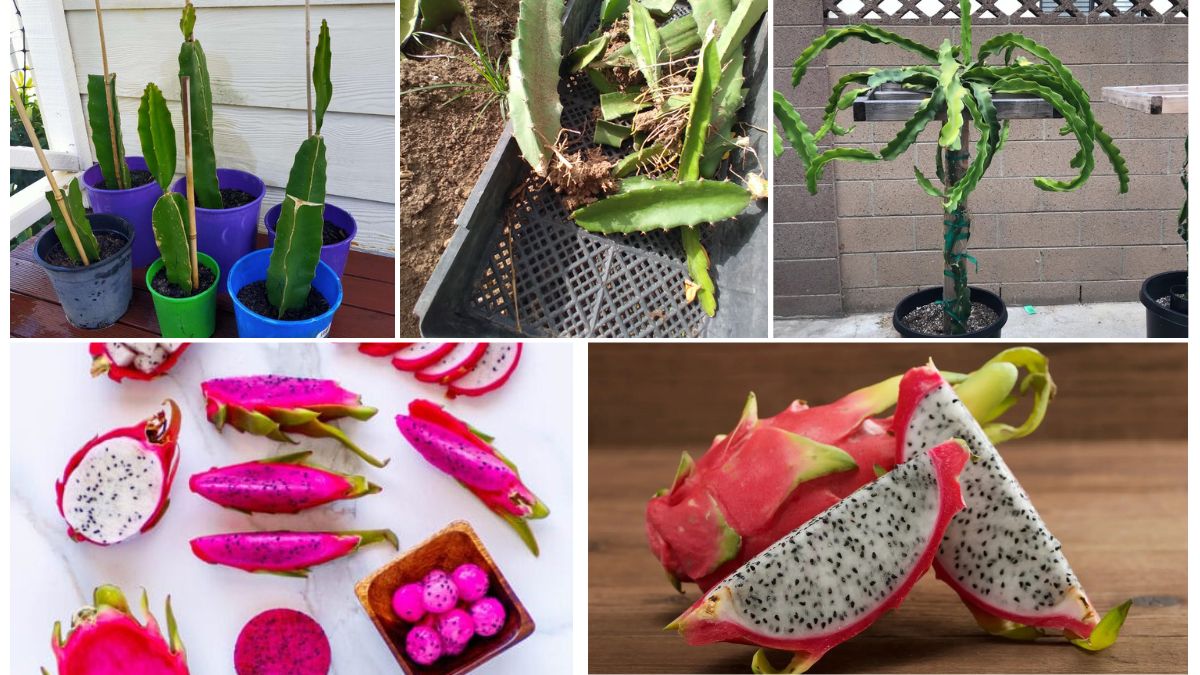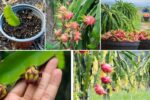Dragon fruit, also known as pitaya, is a stunning tropical cactus that produces sweet, colorful fruit rich in antioxidants, fiber, and vitamin C. While growing it from seeds is possible, cultivating dragon fruit from cuttings is a much quicker and more reliable method, especially for home gardeners. This guide will walk you through everything you need to know about growing dragon fruit from cuttings, right from sourcing the cuttings to enjoying your first harvest.
Why Choose Cuttings Over Seeds?

Growing dragon fruit from seeds can take 5–7 years before fruiting, and the plants often lack the consistency of the parent plant. In contrast, dragon fruit grown from cuttings starts producing fruit in as little as 6–18 months. The benefits of using cuttings include:
- Faster fruit production
- Preserved genetic traits of the parent plant
- Higher success rate
- More resilient growth
Step 1: Choosing the Right Cutting
Your success begins with choosing a healthy, disease-free cutting. Dragon fruit cuttings are typically 12–18 inches long and come from the mature stems of an existing plant. Here’s what to look for:
- Healthy green color: Avoid yellowing or rotting pieces.
- No mold or fungus: The cutting should be clean and dry.
- Segmented stems: The cutting should have clear growth nodes where roots will form.
You can source cuttings from nurseries, online plant sellers, or a neighbor’s thriving plant.
Step 2: Preparing the Cutting
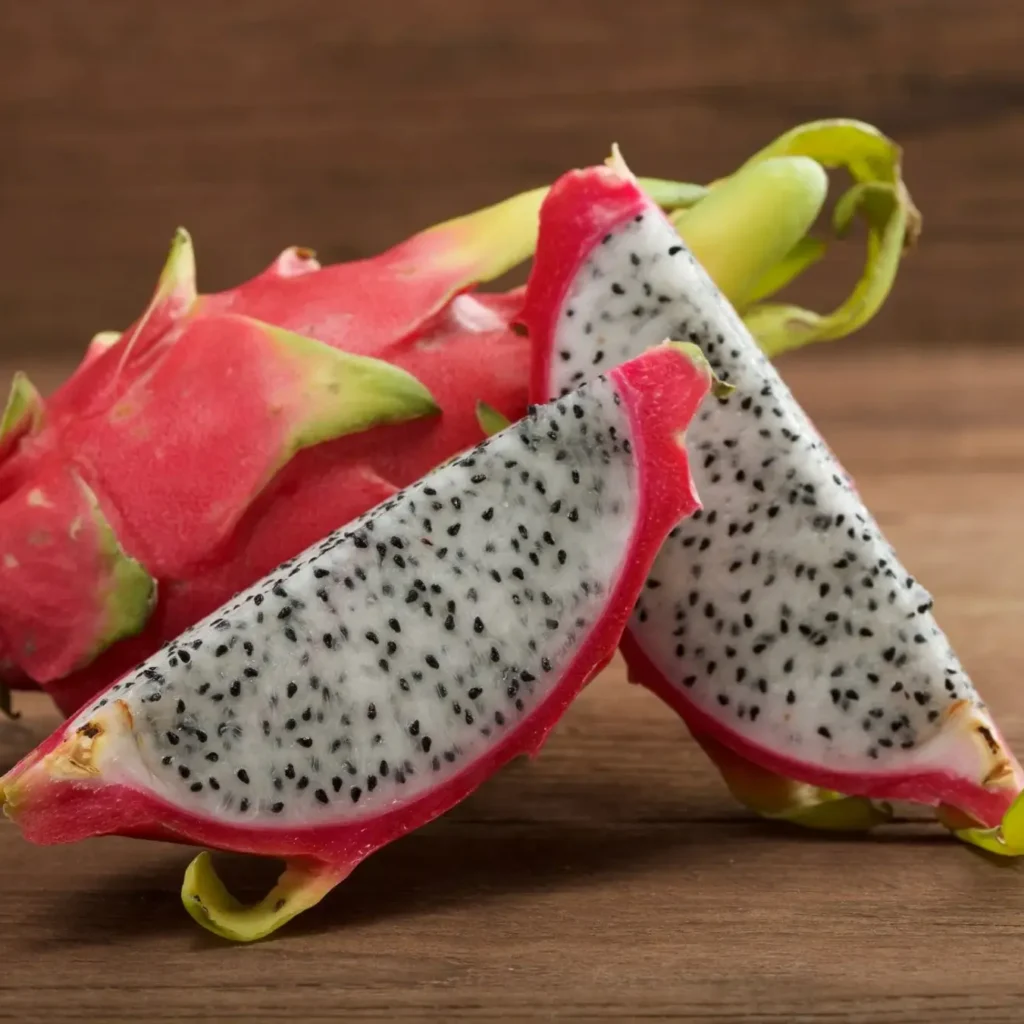
Once you have your cutting, preparation is essential. Follow these steps:
- Let It Callous: Allow the cut end to dry and form a callous for about 5–7 days. This step helps prevent rotting when planted.
- Optional Fungicide Dip: You may dip the calloused end in a fungicide powder to further protect against soil-borne pathogens.
This step is crucial for ensuring that the cutting develops roots instead of decaying in the soil.
Step 3: Selecting the Right Pot and Soil
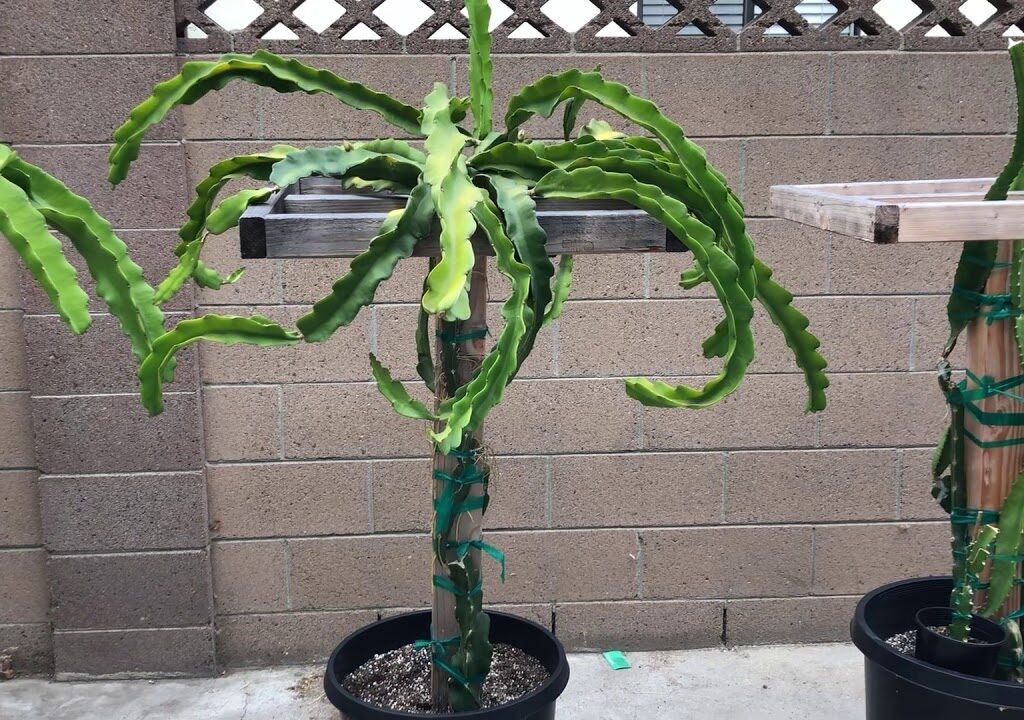
Dragon fruit is a cactus and thrives in well-draining soil. Here’s how to prepare the right container environment:
Pot Selection
- Size: Use a 10–15 inch deep pot with good drainage holes.
- Material: Terracotta or plastic pots work well, but ensure adequate drainage.
Soil Mix
- Cactus mix: A commercial cactus potting mix is ideal.
- DIY Option: Mix equal parts potting soil, sand, and perlite or pumice.
The key is to ensure the soil is loose and drains easily, preventing waterlogging which can rot the roots.
Step 4: Planting the Cutting
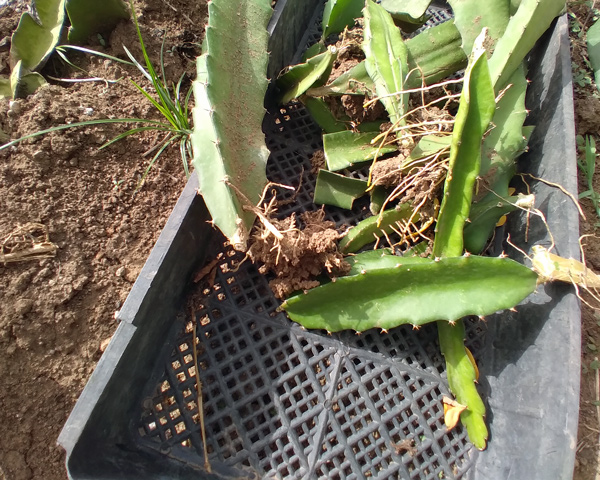
Once the callous has formed, it’s time to plant:
- Fill the pot with your prepared soil.
- Insert the cutting 2–3 inches deep into the soil with the calloused end down.
- Stabilize with a stake or support. Dragon fruit is a climbing cactus, so it needs vertical support as it grows.
Gently press the soil around the cutting and water lightly.
Step 5: Initial Watering and Placement
Water the cutting sparingly at first. Overwatering can cause rot before roots develop.
- Watering: Lightly water after planting. Then wait until the soil is dry before watering again (about once a week).
- Sunlight: Place the pot in a bright location with indirect sunlight. Too much direct sun can stress the unrooted cutting.
After 2–4 weeks, gently tug on the cutting. If it resists, roots have formed!
Step 6: Caring for Your Dragon Fruit Plant
Once rooted, the dragon fruit cutting will begin to grow rapidly. Here’s how to care for it:
1. Watering Schedule
- Frequency: Water when the top 1–2 inches of soil are dry.
- Avoid overwatering: Root rot is the most common killer of potted dragon fruit.
2. Sunlight
- Needs 6–8 hours of bright sunlight daily.
- Gradually increase direct sunlight exposure after rooting.
3. Fertilizing
- Type: Use a balanced fertilizer (10-10-10) or cactus-specific fertilizer.
- Frequency: Feed once every 4–6 weeks during the growing season (spring to early autumn).
Step 7: Supporting Vertical Growth
Dragon fruit is a climbing cactus and needs sturdy support as it matures.
Trellis Options:
- A wooden post with a top frame (T-shaped)
- Bamboo stakes tied with soft ties
- Wire mesh cages for circular growth
Training the plant to climb improves airflow, disease resistance, and productivity.
Step 8: Encouraging Flowering and Fruiting

Your plant will flower in late spring or summer. To increase the chances of fruiting:
1. Pollination
- Some varieties are self-pollinating, others need hand pollination.
- Use a soft brush to transfer pollen from the stamen to the pistil early in the morning or evening.
2. Pruning
- Prune excess stems to focus energy on fruiting branches.
- Remove any dead or damaged growth.
3. Feeding
- During flowering, use a high-phosphorus fertilizer to encourage blooms and fruit.
Step 9: Harvesting
Dragon fruit is ready to harvest about 30–50 days after flowering.
Signs of Ripeness:
- The skin color changes (pink or yellow depending on variety)
- The fruit becomes slightly soft to touch
- The scales (leaf-like structures) on the skin turn brown at the tips
Use clean scissors or pruning shears to harvest. Avoid twisting or pulling.
Troubleshooting Common Issues
1. Root Rot
- Cause: Overwatering or poor drainage.
- Solution: Reduce watering, check soil, and replant if needed.
2. Pests
- Common: Mealybugs, aphids, snails.
- Solution: Neem oil or insecticidal soap.
3. Sunburn
- Cause: Too much direct sunlight after transplanting.
- Solution: Gradually acclimate cuttings to full sun.
Benefits of Growing Dragon Fruit at Home
- Fresh, Organic Produce: Know exactly what you’re eating.
- Ornamental Value: The plant adds exotic beauty to any space.
- Space-Saving: Perfect for balconies, rooftops, and indoor sunrooms.
- Low Maintenance: Once established, it’s drought-tolerant and hardy.
Final Thoughts
Growing dragon fruit from cuttings at home is not only possible but also incredibly rewarding. With the right care and conditions, you can enjoy vibrant blooms and delicious fruit in less than two years. From choosing the right cutting to mastering pollination and pruning, this guide gives you all the tools needed to succeed. Whether you’re a beginner or an experienced gardener, dragon fruit offers a unique and fruitful gardening experience that fits even in compact urban spaces.
